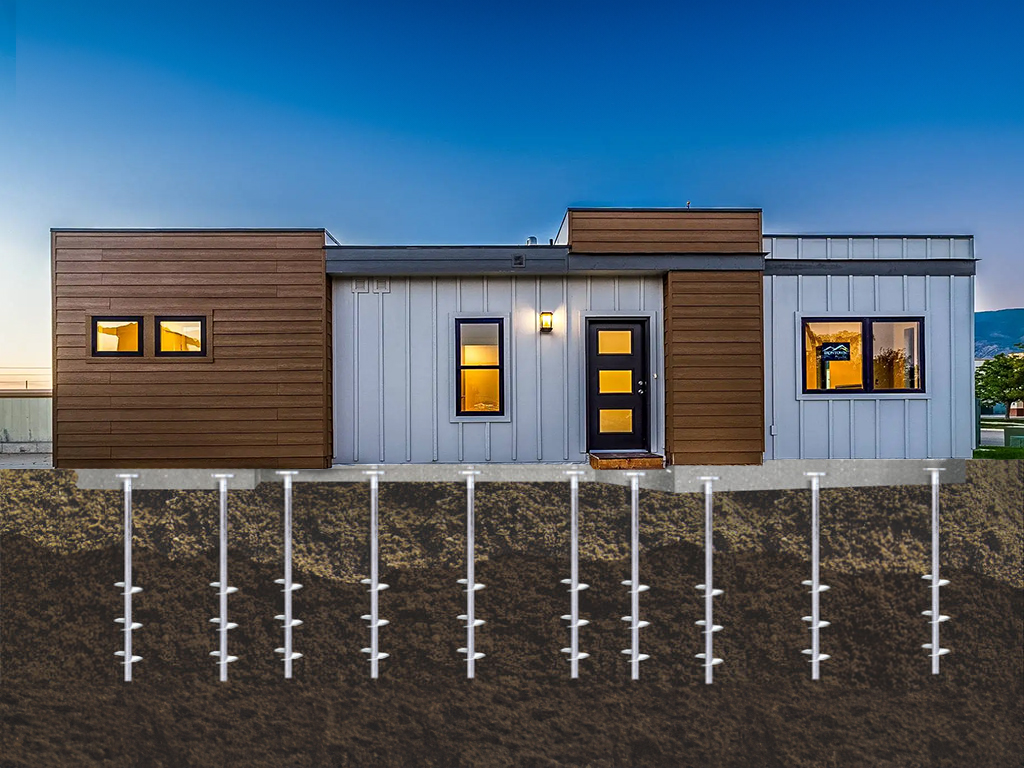Foundation and helical piles have distinct differences. Here’s a comparison between the two.
Foundation:
- Traditional Approach: Foundations have been used for centuries and are the standard method for supporting buildings and structures.
- Various Types: There are different types of foundations, including shallow foundations (such as strip, raft, or pad foundations) and deep foundations (such as piles or drilled shafts).
- Construction Process: Foundations are typically constructed by excavating the ground, pouring concrete, and allowing it to cure to create a stable base for the structure.
- Load Distribution: Foundations distribute the load of the structure over a larger area of soil to prevent settlement and ensure stability.
- Design Considerations: Factors such as soil type, building loads, and environmental conditions are considered during the design of foundations.
Helical Piles:
- Modern Technique: Helical piles are a relatively newer technology used for foundation support.
- Helical Shape: Helical piles consist of a central shaft with helical flights (similar to screws) attached to it, which are drilled into the ground.
- Installation: They are installed using specialized equipment that screws them into the ground until they reach a specified depth or load-bearing stratum.
- Versatility: Helical piles can be used in various soil conditions, including loose or unstable soils, and can be installed in limited access areas.
- Load Capacity: Helical piles can provide high load-bearing capacity, making them suitable for a wide range of applications, including residential, commercial, and industrial projects.
- Minimal Disturbance: Installation of helical piles typically causes minimal disturbance to the surrounding area compared to traditional foundation methods.
Both foundations and helical piles serve the purpose of supporting structures, helical piles offer some advantages such as versatility, ease of installation, and minimal disturbance during installation. But ultimately the choice between the two may depend on soil conditions, load requirements, and project constraints.

